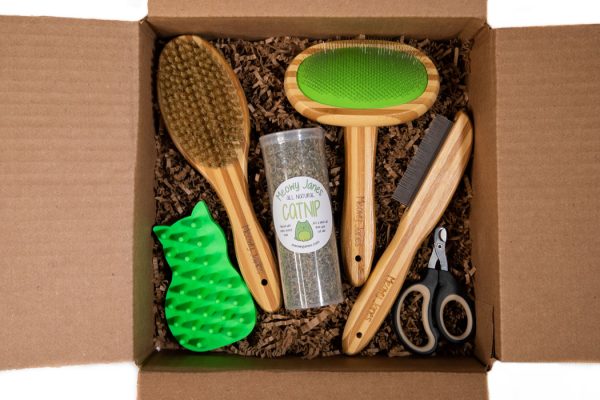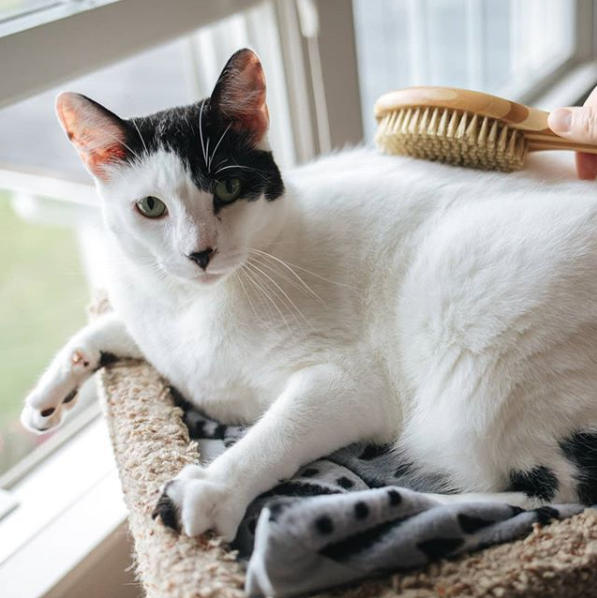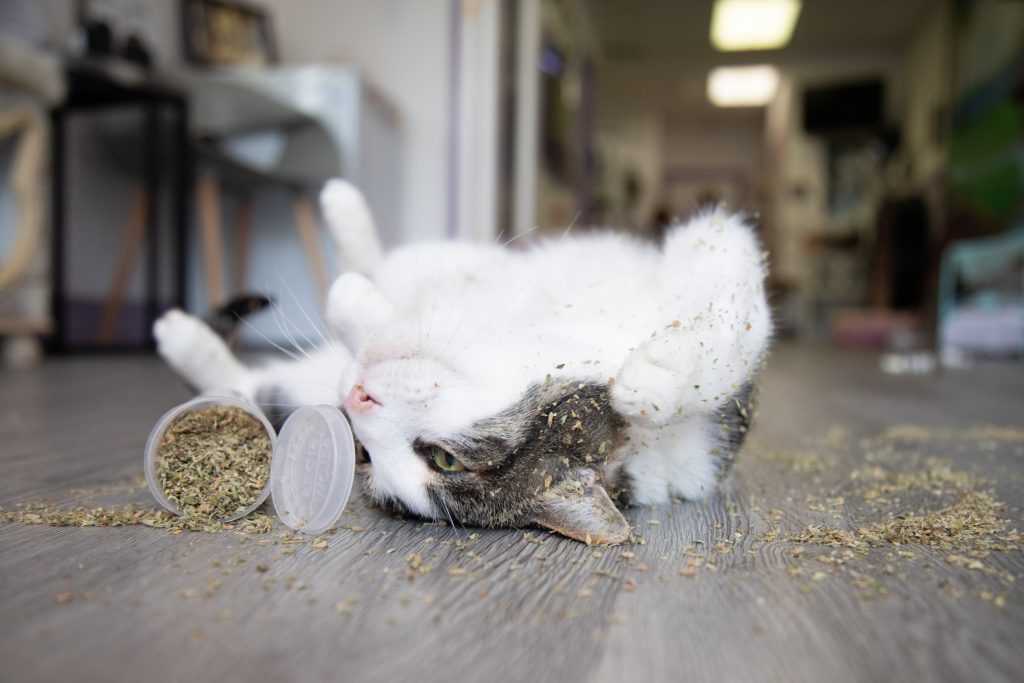Why is it important to brush your cat?
- It means less hair on the furniture (and your clothes!) and fewer hairballs around the house!
- Brushing your cat regularly from the time it is young gets them used to being handled and touched
- Brushing regularly helps prevent painful matting, which also saves time/money in having to have a cat professionally groomed
- Helps skin/coat to distribute skin oils, preventing flakes and keeping coat shiny
- Removing loose hair helps pet to regulate body temperature- cooling them in the summer and keeping them warm in the winter.
What’s in the box?
Curry Comb
– The rubber acts like a magnet to attract loose hair, it is flexible and light which is easy on a cats skin and reduces over stimulation from brushing, removes loose hair and massages skin, is the best brush for sensitive areas
Slicker Brush
– A slicker is a flat metal brush that has small, fine wire bristles that are bent at a slight angle. Wire slickers are good at removing any loose fur. They also help to keep long coats mat free.
Bristle Brush
– A soft-bristled brush is good for removing dirt, debris, dead skin cells and loose hair from your cat’s coat. It’s also nice to use at the end of a grooming session to distribute the oils through the coat, which makes it shiny and smooth.
Flea Comb
– A flea comb isn’t just for fleas! They can also be used as a ‘precision brush’. Flea combs are great at removing any loose debris in your cats coat. Because the teeth are close together, they will also remove lots of dead hair. A flea comb is best used at the end of your brushing routine as a finishing tool.
Nail Trimmers
– Trimming a cats nails regularly has numerous benefits! Not only does it prevent a cats nails from being little pointy needles, but it helps with paw health and discourages negative clawing behavior!
Catnip
– Encourages bonding between owner and pet through play- and can be given as a fun treat after a grooming session!
How to brush and groom your cat-
First, make sure your cat is comfortable and receptive to being touched. Begin with areas where your cat likes to be pet, usually on the back, between their ears, or under the chin. Brush with the grain, and concentrate on one area at a time. As your cat becomes receptive to being brushed, you can slowly make your way toward more sensitive areas. If they become uncomfortable, stop for a while, then you can continue when they return back to being comfortable. Over time, your cat will become accustomed to being brushed and will enjoy it!
Finish each brushing session with some catnip or another special treat so they start to associate being brushed with good things!
It’s best to brush a long haired cat at least once a day, but any amount of brushing is best!








Reviews
There are no reviews yet.